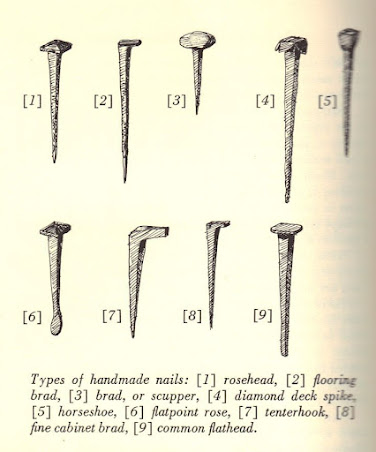Nails in Pioneer Log House Construction
In the rugged expanse of the American frontier, where the untamed wilderness stretched as far as the eye could see, pioneers embarked on a journey of survival and resilience. Among the myriad challenges they faced, perhaps none was as perplexing as the task of building a home without the aid of modern conveniences. In the early days of settlement, before the advent of cut nails and mass production, the humble nail held a value beyond measure in the construction of pioneer log houses.
To the modern eye, the notion of constructing a house without nails seems unfathomable. Yet, for the pioneers who ventured into the wilderness before the turn of the 19th century, nails were a scarce commodity, reserved for only the most essential tasks. In these early log cabins, craftsmanship and ingenuity took precedence over the convenience of metal fasteners.
Before the invention of cut nails in 1790, all nails were painstakingly hand-forged, a laborious process that required skill and patience. Each nail was a testament to the craftsmanship of the blacksmith, hammered into shape with precision and care. Yet, even as the demand for nails grew, their scarcity persisted on the frontier, where every resource was precious beyond measure.
In a testament to the value of nails, pioneers would go to great lengths to salvage them from abandoned structures. When a settler chose to leave behind his old cabin in search of greener pastures, the extraction of nails became a matter of necessity. In a practice that may seem extreme to modern sensibilities, abandoned cabins were often consigned to flames, the timber reduced to ash in pursuit of the precious metal within.
Such was the scarcity of nails on the frontier that early Virginia law mandated the burning of abandoned houses to salvage their nails—a testament to the value placed on these humble fasteners. In a world where every nail was a treasure, pioneers devised ingenious ways to make do with what little they had.
Yet, as the wheels of progress turned and industrialization swept across the land, the era of mass-produced nails dawned upon the frontier. With the advent of mechanized production, nails became more accessible, their once exorbitant price plummeting to levels within reach of even the most modest settler.
The transition from scarcity to abundance marked a turning point in the history of pioneer log house construction. No longer constrained by the limitations of hand-forged nails, pioneers could now build with a newfound sense of freedom and possibility. The log cabin, once a testament to scarcity and survival, evolved into a symbol of endurance and innovation—a testament to the indomitable spirit of those who dared to carve a home out of the wilderness.
As we gaze upon the log cabins that dot the landscape of the American frontier, let us not forget the humble nail—the unsung hero of pioneer craftsmanship. In its scarcity, it embodied the trials and tribulations of life on the frontier. And in its abundance, it paved the way for a new era of possibility and progress.

